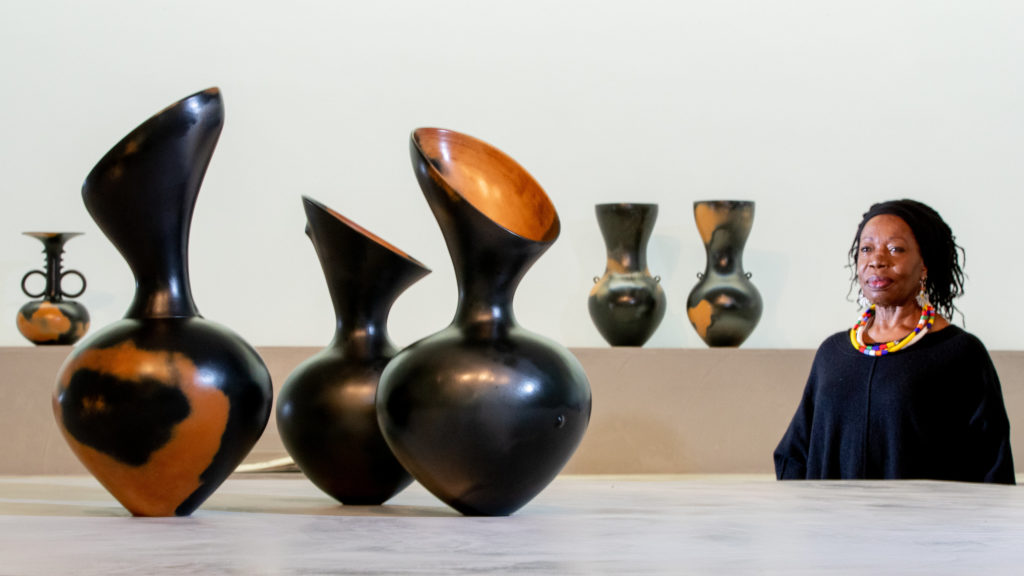I first saw Magdalene’s work in an old catalogue in about 2010. I was really intrigued by it because — and this is the beauty of her work — she is that sort of quiet genius that has worked for a while on her own terms and in her own time, and without real categorisation. So I discovered the work in a catalogue, and then in 2014 I was curating a mixed group show at Salon 94 Gallery in New York featuring various artists, from Lynette Yiadom-Boakye to Alexander Calder. By chance, I spotted another Magdalene Odundo in an old catalogue and it occurred to me that it would be important to include her in this show in New York, because it was something that I loved and the show was all about textures and artworks that have a really personal and tactile element, for example paintings by Barkley L. Hendricks or Lynette Yiadom-Boakye. So I thought it was important to include Magdalene’s ceramics.
Jeanne Greenberg Rohatyn [owner of Salon 94] happened to find one that I could use. It arrived two days before the show that I curated, which was titled More Material, opened and ended up being a very central and important aspect of that show.

